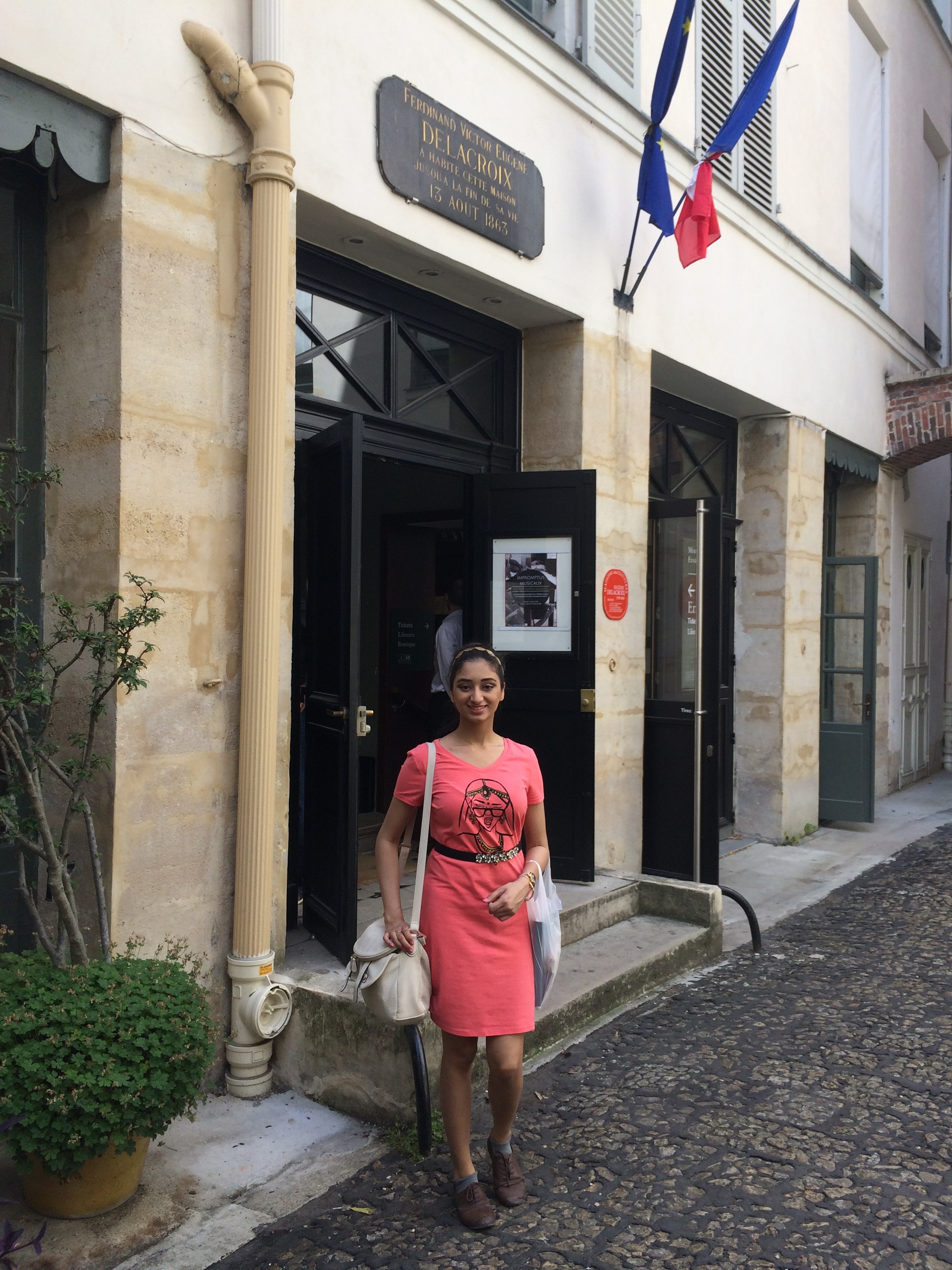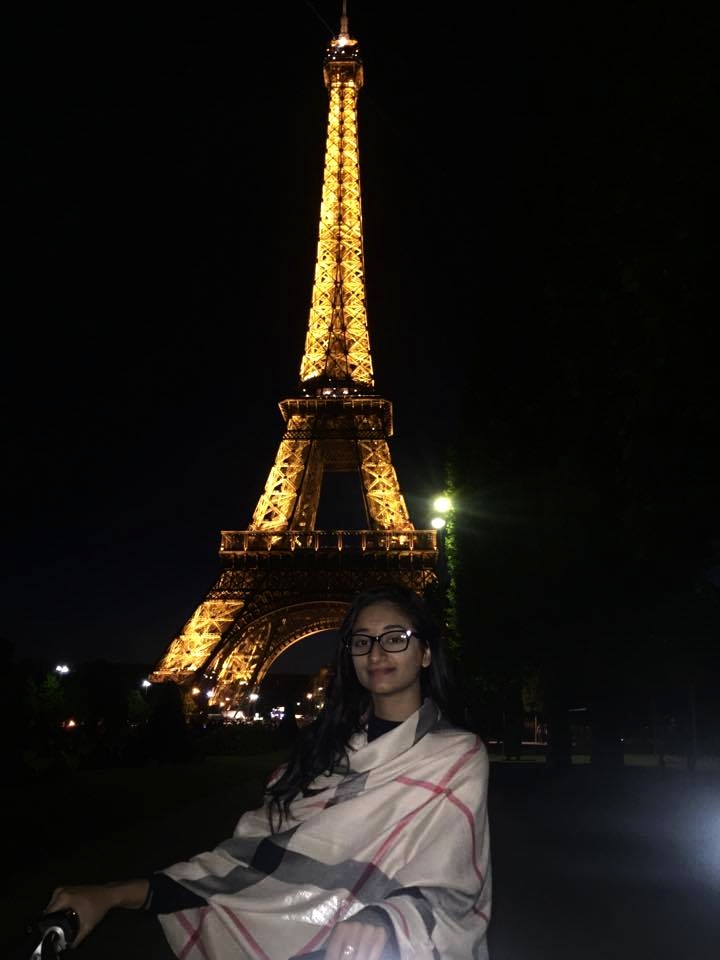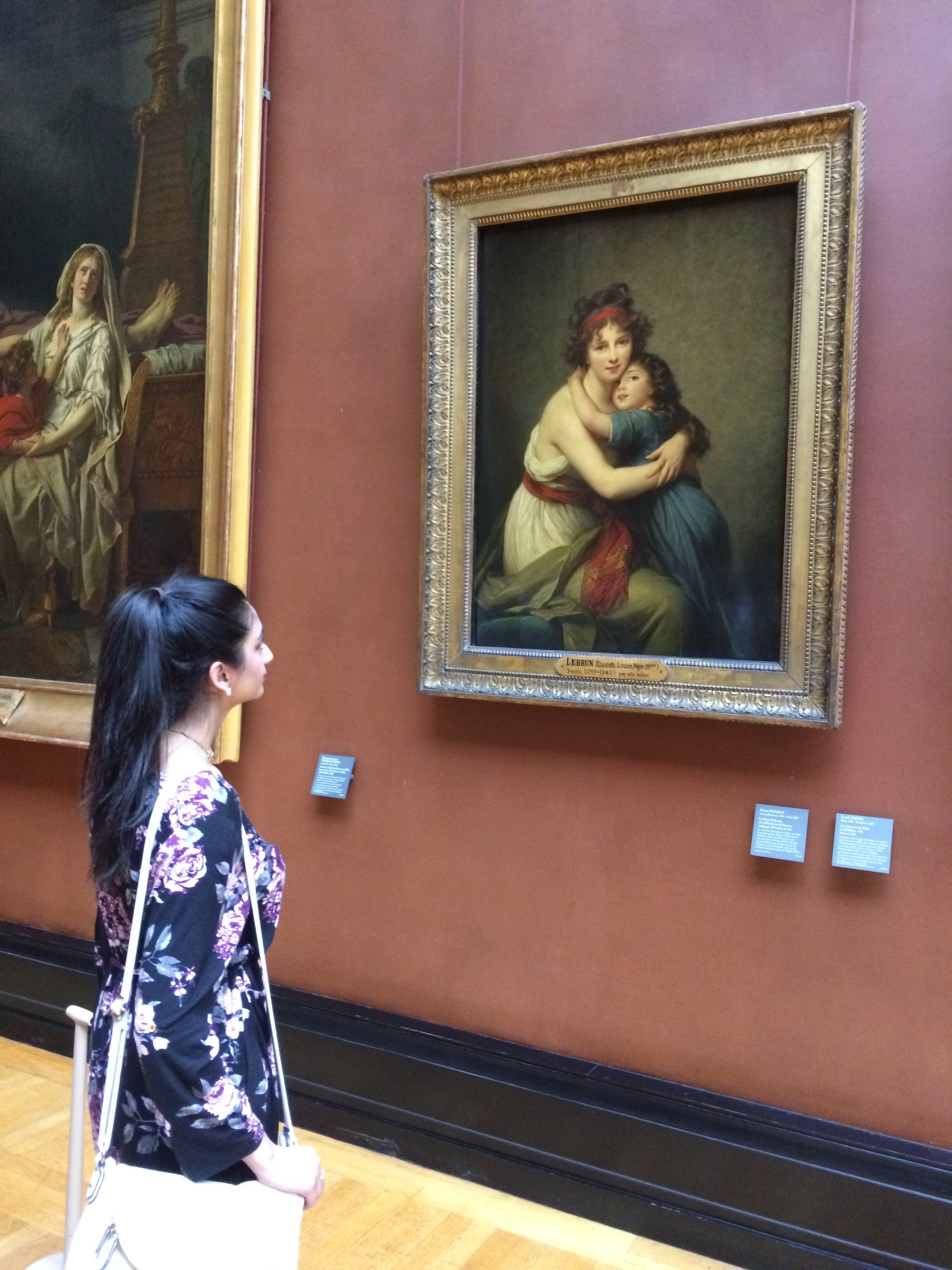Tell us a little bit about yourself—your background, major program of study, reasons for taking this trip, and anything else interesting you want to share (maybe something people might not know about you).
I am a Bachelor of Fine Arts student, going into fourth year next semester. My personal understanding of art and its purpose has driven me to learn about art throughout my life. My work is 2D, consisting of painting, drawing, and printmaking. Drawing is an act which brings me pleasure and allows me to express and find myself. When I heard about the field school trip to Paris and Documenta, I grasped the opportunity to be a part of it. Paris is one of the major art and culture hubs in the world with a large history in connection to the arts. Moreover, Documenta, is one of the most important international art exhibitions in the world, which is held every 5 years. I instantly knew that this experience was something I could take from. I am taking my sketchbook along everywhere I go, to sketch everything I see. Working as a sketch artist in the fashion industry has taught me how to do quick sketches and put me in a habit of keeping my sketchbook on hand at all times. I believe that seeing other parts of the world and immersing yourself in foreign cultures opens up completely new avenues of discovery. Travel in itself can be educational and can open our eyes in ways we never thought possible. Through travel, we can become more aware, both of ourselves, and of the larger world around us.
Enjoying the fountain at the the Place de Concorde-- Gurleen (in plaid dress) waving hello!
What has met or exceeded your expectations or surprised you about Paris (or Kassel) so far?
Going on this trip is amazing. I got the once in a life time opportunity to travel to such countries and I am seeing historical art, which I have only read about, in real life. Moreover, the chance to see an exhibition that is not very frequent to see a show that will not been seen again, in the art world any time soon. I knew that Paris was beautiful and has amazing architecture, but I was surprised that all of Paris, France is very ancient. Every single building is beautiful in its own way. The experience feels like traveling through an ancient city that has been through various traumatic events in its long history, it wants you to forget about what has caused so much despair over the centuries and focus on the beauty of what has made the city a worthwhile spectacle to admire.
Gurleen worked with her assigned painting Gustave Caillebotte, The Floor Scrapers (1875) on her studio projects before seeing the work in person in Paris.
Give us some insight into your assigned artwork from the Orsay Musuem. After seeing the work in person in Paris (and any other related art from the same artist or art movement associated with the assigned work), what struck you most about it and/or how did the artwork’s form, content, and context shift for you when seeing it.
The painting I was assigned in the class before coming to Paris is Gustave Caillebotte’s The Floor Scrapers (1875). In the Orsay museum it was located in a room with other Caillebotte paintings. There were many people surrounding the artwork, but finally when after ten minutes I got a chance to look at it closely I was shocked at the amount of detail. The light falling on the back of the men was a creamy golden colour and it shined. The light coming in from the back window looked very realistic as if there was real sunlight shining down. I noticed there was much more contrast in the painting then when looking at images online or in books. The painting was modern because of all the cropping in the image. The tiny details were more noticeable in the painting in real life, I never noticed the cropped working tools before. The cropped image and unusual perspective is also another reason that makes the painting different from its time.
Gurleen discusses her response artwork at the final critique in the pre-departure studio class.
How did you approach the creative task of responding to this assigned work in studio? What were your challenges as an artist to be in dialogue with the artwork and artist? Would you do anything differently now that you have seen the work in person?
What I understood from my painting is that the perspective is unique. The workers are facing towards each other with their heads turned slightly. Although we cannot see their faces clearly, it is evident that they are engaging in a conversation. They have had food to eat and drink and are now slowly working away at their own pace. It is important to note that the figures are half-nude. It was not common at this time to how nude males were portrayed in paintings. The perspective of the painting from above looks like someone’s viewpoint. Caillebotte’s studio space is what is being renovated; most likely, he is the one looking down at the workers, showing who has more power in the situation. The way that Caillebotte is looking at his workers presents a gaze full of passion. The way in which he has painted the light shining on the back of the workers is unexpected; it symbolizes sexual arousal and passion. In my first art project I decided to focus on the aspect of making the painting modern. In the second part I focused more on the theme of oppression. Although I am very satisfied with my project, I am now looking at the painting in real life and I feel I would have gotten a better idea by looking at it much more closely.
Today’s activity was a free day off on your own. What were your impressions? What will you take away of the experiences of this day? What are the most memorable moments for you?
Today we had the day to ourselves to go to different museums. I headed to the Delacroix museum and the Picasso museum. The Delacroix museum was very small and intimate with small rooms and some of his most important sketches and paintings. Because the museum itself was small, I got the chance to sit in the garden outside and sketch his artwork. Although I am not a fan of abstract art, I am fond of Picasso. I felt that his work spoke to me on a spiritual level as his work related to me with the emotional concepts and depictions of his wife and children. Picasso’s subject matter of family resonated with me as I tend to focus on creating artwork of my family and develop further studies of family life. After the museum trip, I decided to go to a café for dinner, and there I ordered some food, sat outside, and decided to enjoy my meal. I’ve seen many Parisians do this so decided to try myself. It was very interesting experience to look out and watch the busy life, and to just sit down for once, observe, and relax. Coming on this trip has taught me to step back and pay attention to the world around us, and not take everything for granted.








